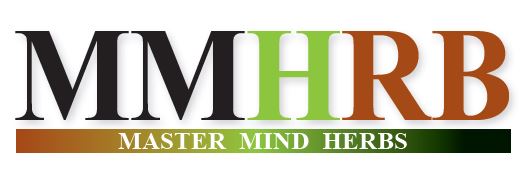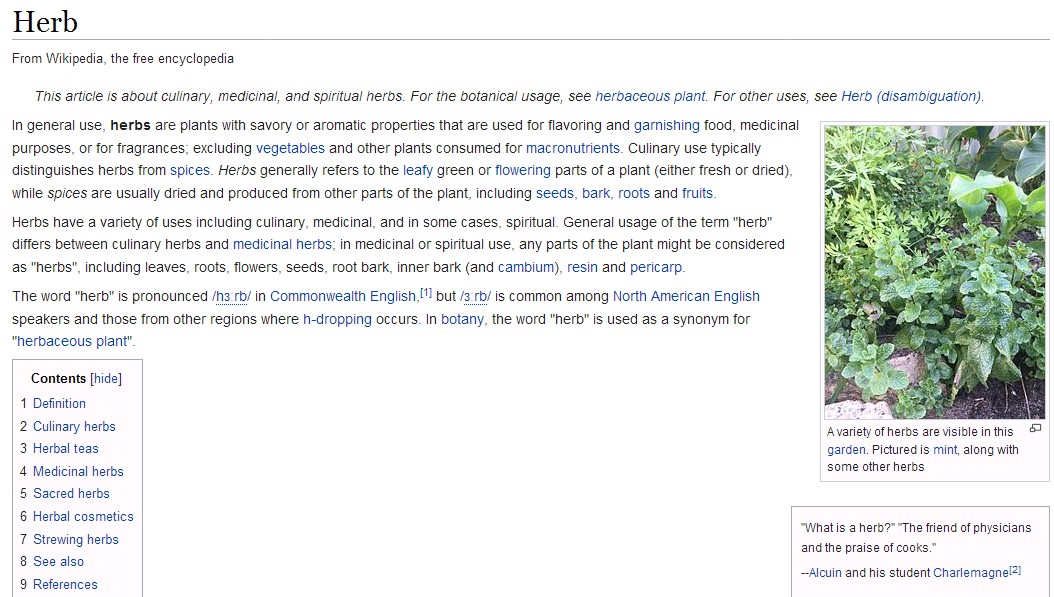
Definition from the Field of Master Mind Herbs (MMHRB)
Shared from the nature of: Joseph Mercado
Article Resource: Wikipedia.org
To: Herbalist
Blog Post #699
Re: The Definition of an Herb
Date and Time: Sunday, May 26, 2019 at 8:25 p.m.
Dear Herbalist,
What is the definition of the word ‘herb?’
In general use, herbs are plants with savory or aromatic properties that are used for flavoring and garnishing food, medicinal purposes, or for fragrances; excluding vegetables and other plants consumed for macronutrients.
Culinary use typically distinguishes herbs from spices. Herbs generally refers to the leafy green or flowering parts of a plant (either fresh or dried), while spices are usually dried and produced from other parts of the plant, including seeds, bark, roots and fruits.
Herbs have a variety of uses including culinary, medicinal, and in some cases, spiritual. General usage of the term “herb” differs between culinary herbs and medicinal herbs; in medicinal or spiritual use, any parts of the plant might be considered as “herbs”, including leaves, roots, flowers, seeds, root bark, inner bark (and cambium), resin and pericarp.
The word “herb” is pronounced /hɜːrb/ in Commonwealth English,[1] but /ɜːrb/ is common among North American English speakers and those from other regions where h-dropping occurs. In botany, the word “herb” is used as a synonym for “herbaceous plant“.
In botany, the term herb refers to a herbaceous plant,[3] defined as a small, seed-bearing plant without a woody stem in which all aerial parts (i.e. above ground) die back to the ground at the end of each growing season.[4]
Usually the term refers to perennials,[3] although herbaceous plants can also be annuals (where the plant dies at the end of the growing season and grows back from seed next year),[5] or biennials.[3]
This term is in contrast to shrubs and trees which possess a woody stem.[4] Shrubs and trees are also defined in terms of size, where shrubs are less than 10 meters tall, and trees may grow over 10 meters.[4] The word herbaceous is derived from Latin herbāceus meaning “grassy”, from herba “grass, herb”.[6]
Another sense of the term herb can refer to a much larger range of plants,[7] with culinary, therapeutic or other uses.[3] For example, some of the most commonly described herbs such as Sage, Rosemary and Lavender would be excluded from the botanical definition of a herb as they do not die down each year, and they possess woody stems.[5]
In the wider sense, herbs may be herbaceous perennials but also trees,[7] subshrubs,[7] shrubs,[7] annuals,[7] lianas,[7] ferns,[7] mosses,[7] algae,[7] lichens,[5] and fungi.[5] Herbalism can utilize not just stems and leaves but also fruit, roots, bark and gums.[5]
Therefore one suggested definition of a herb is a plant which is of use to humans,[5] although this definition is problematic since it could cover a great many plants that are not commonly described as herbs.
Ancient Greek philosopher Theophrastus divided the plant world into trees, shrubs and herbs.[8] Herbs came to be considered in 3 groups, namely pot herbs (e.g. onions), sweet herbs (e.g. thyme) and salad herbs (e.g. wild celery).[5]
During the seventeenth century as selective breeding changed the plants size and flavor away from the wild plant, pot herbs began to be referred to as vegetables as they were no longer considered only suitable for the pot.[5]
Content Source: Wikipedia.org

![]()
Have a question about this definition?
Please send us an email message below and we will serve you with an answer momentarily.


